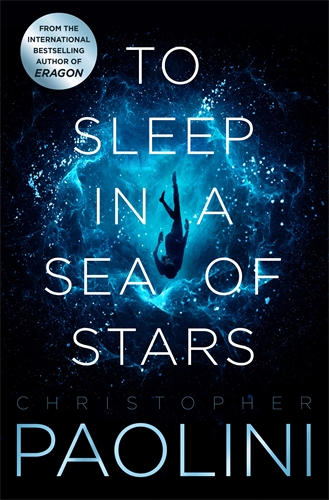TO SLEEP IN A SEA OF STARS
Christopher Paolini
Pan Macmillan
REVIEWED BY CUSHLA McKINNEY
Best known for his YA fantasy series The Inheritance Cycle, Christopher Paolini has spent years dreaming of a woman finding an alien biosuit on a moon orbiting a gas giant. Over a decade years in the making, To Sleep in a Sea of Stars is the realisation of that vision, and one that more than does justice to the best traditions of aspirational sci-fi.
After seven years travelling the galaxy in the employ of Lapsang Trading Corp, xenobiologist Kira Navarez is ready to settle down and start a new life as a colonist. But hours before completing her final mission she discovers what appears to be a piece of alien architecture created by a long-gone race called the Vanished, only the second such artefact humanity has encountered since venturing into space.

The suit's activation also attracts the attention of its previous owners, the Jellies, a be-tentacled species. When their ships arrive to reclaim their lost property, Kira flees the planet only to come back to colonised space to find the human race under attack from both the Jellies and another, monstrous and indiscriminately murderous species new to both races. Kira is human (and Jelly)-kind's only hope, but only if she can find a way to understand and work with the Soft Blade in the manner in which the Vanished intended.
If this all sounds like a B-grade space opera, that is because it is impossible to adequately summarise a book of over 800 pages long and a kilo in weight. The novel is in fact an impressive work of hard sci-fi, with a fully realised and internally consistent world and a story that contains echoes of everything from the Bible to Tolkien, Virgil to Ian M Banks.
Paolini's descriptions of ship-board conditions are vivid, realistic and cleave to the known laws of physics, and he gives no quarter to to the uninitiated. Although he includes helpful appendices for those who want to brush up on quantum physics, ship-based space combat or culturally-specific terminology, it is assumed that readers - like the characters - are familiar with FTL drives, Ship minds and Markov limits, freeing him from the need to include lengthy and distracting discussions of irrelevances. Strong female characters abound, along with a Han Solo-ish starship captain who considers a cat and pig as important a part of the crew as his human colleagues, and the story's careful pacing sustains the reader through all but the final few pages.
The book's sheer size makes it physically difficult to read, but I cannot think of a better way to spend the long, lazy days of summer than lost in dreams amid a sea of stars.
Cushla McKinney is a Dunedin scientist












